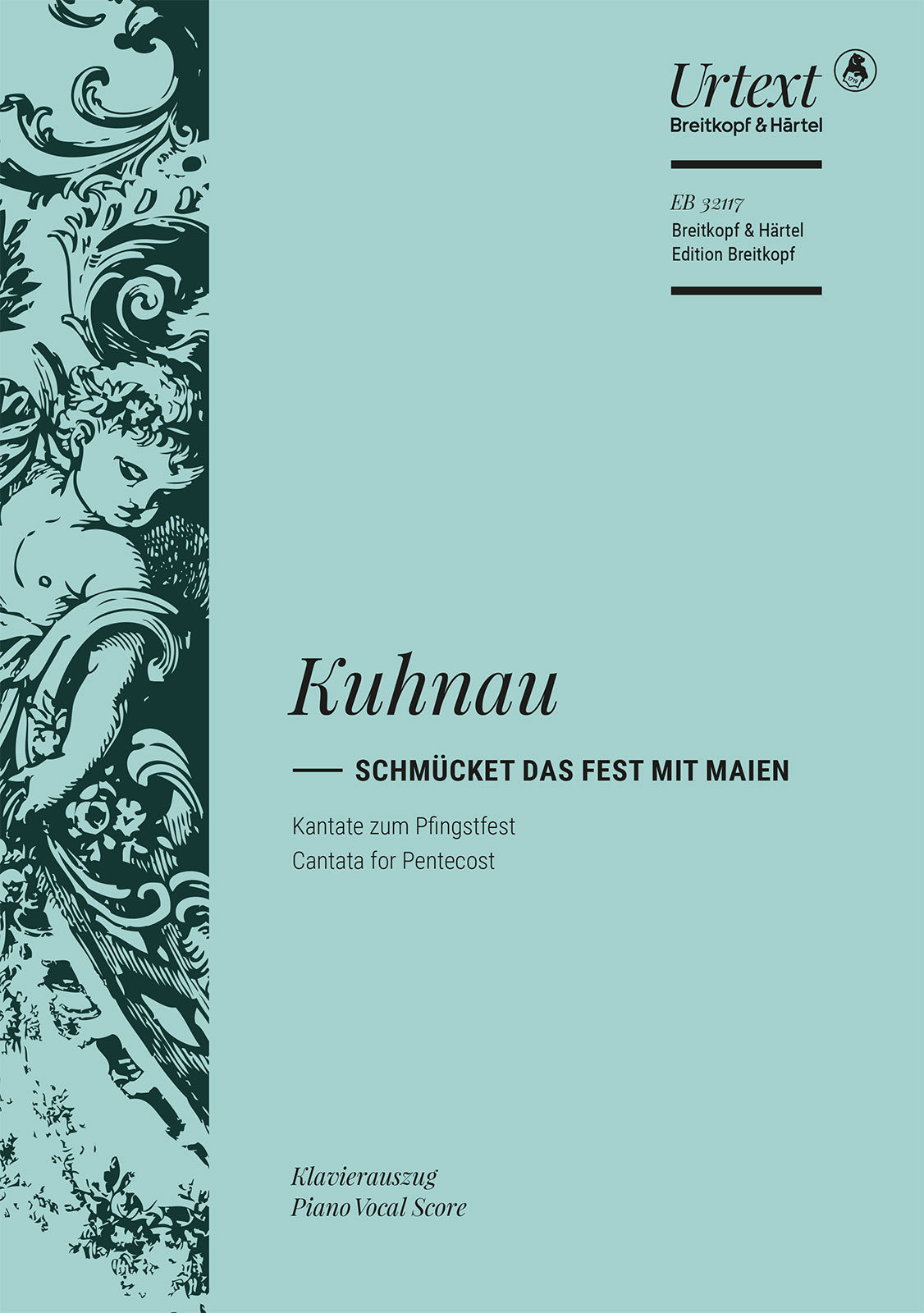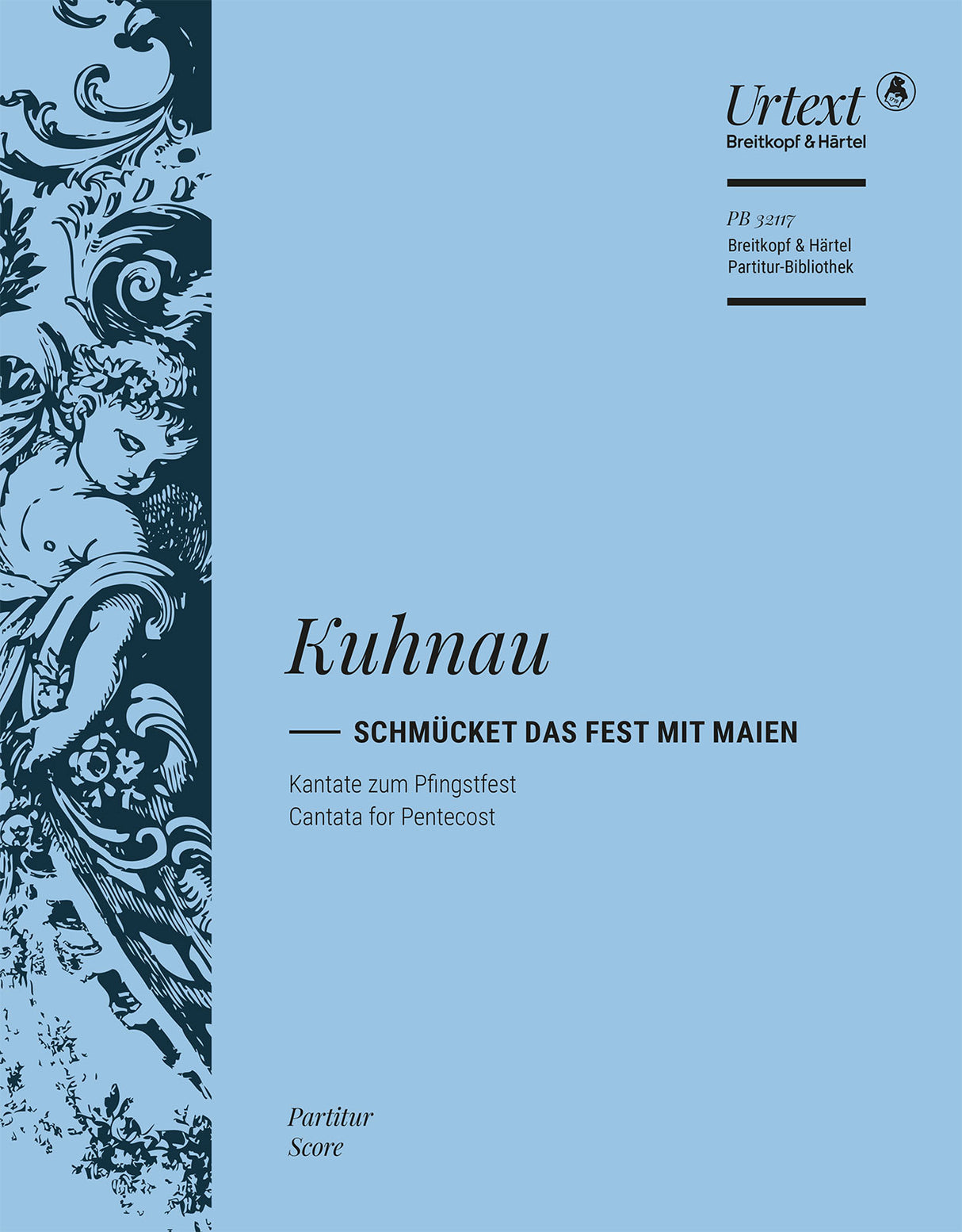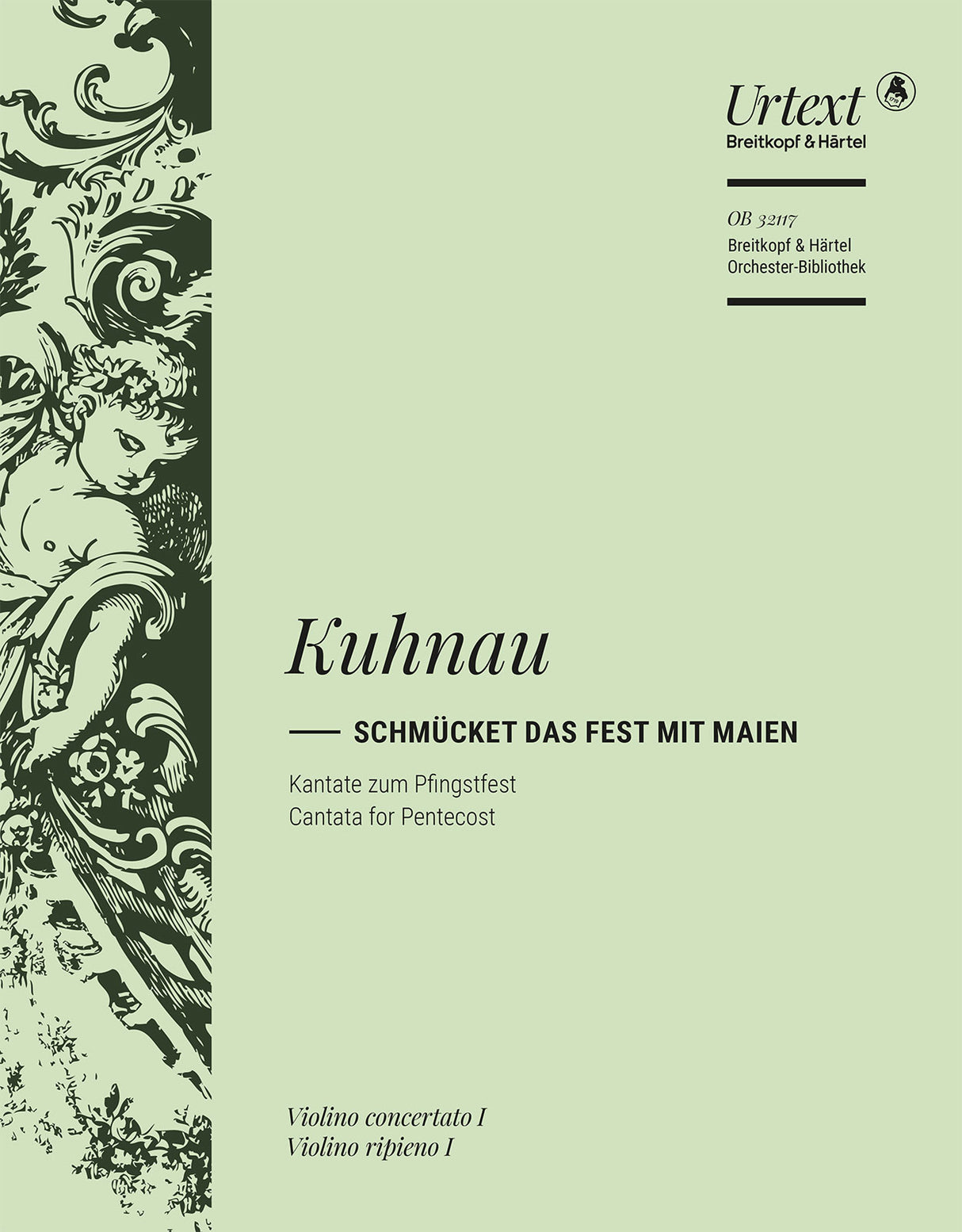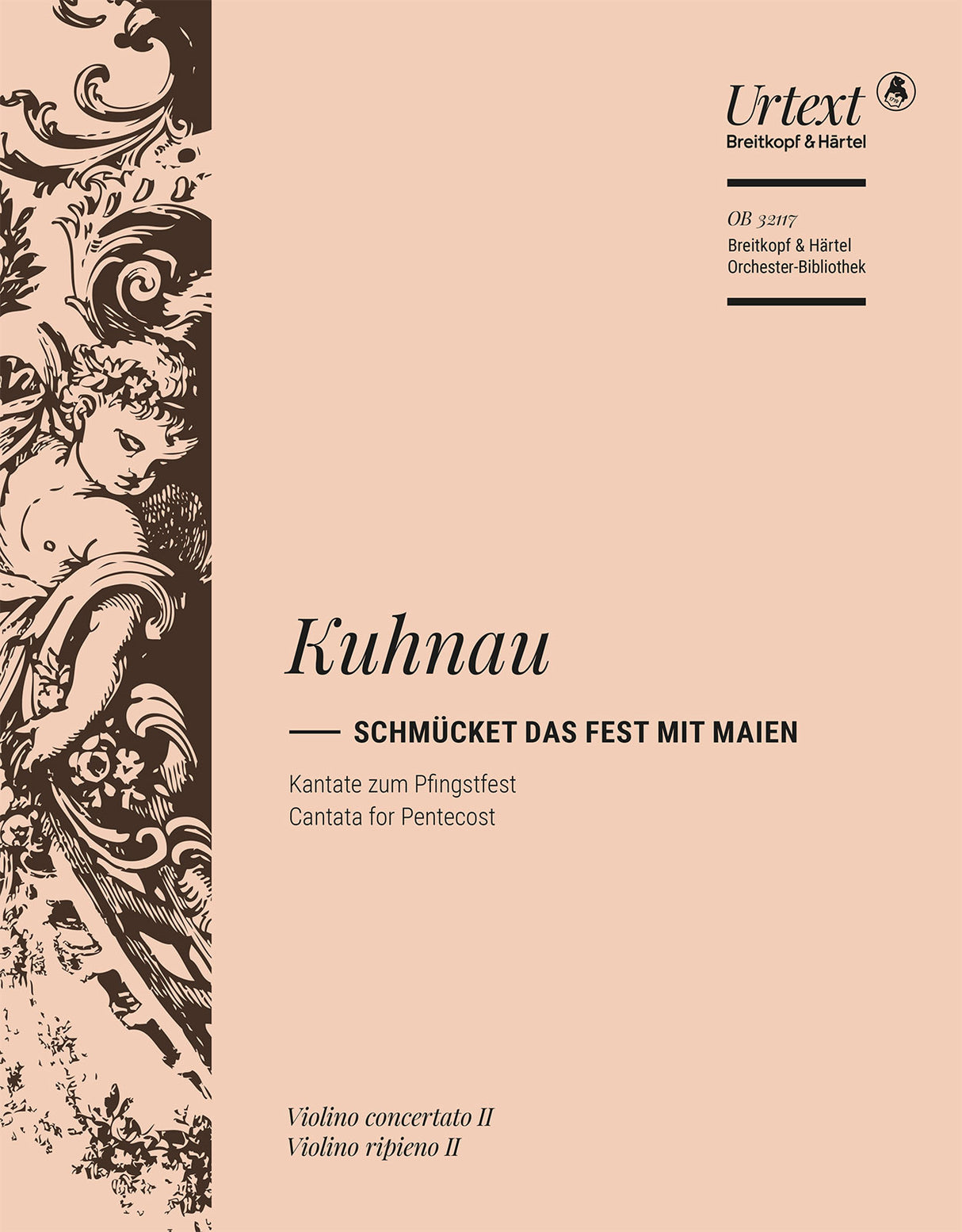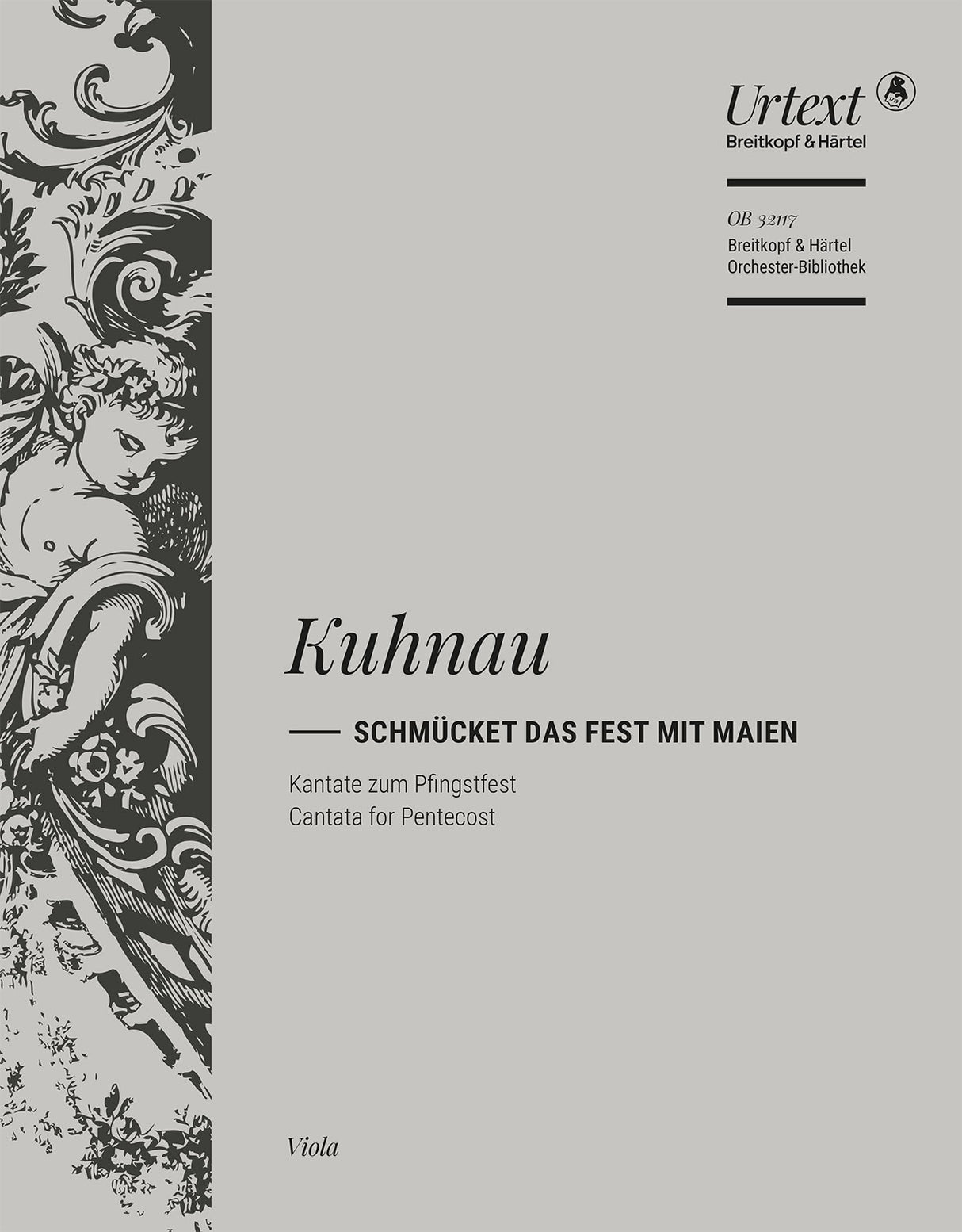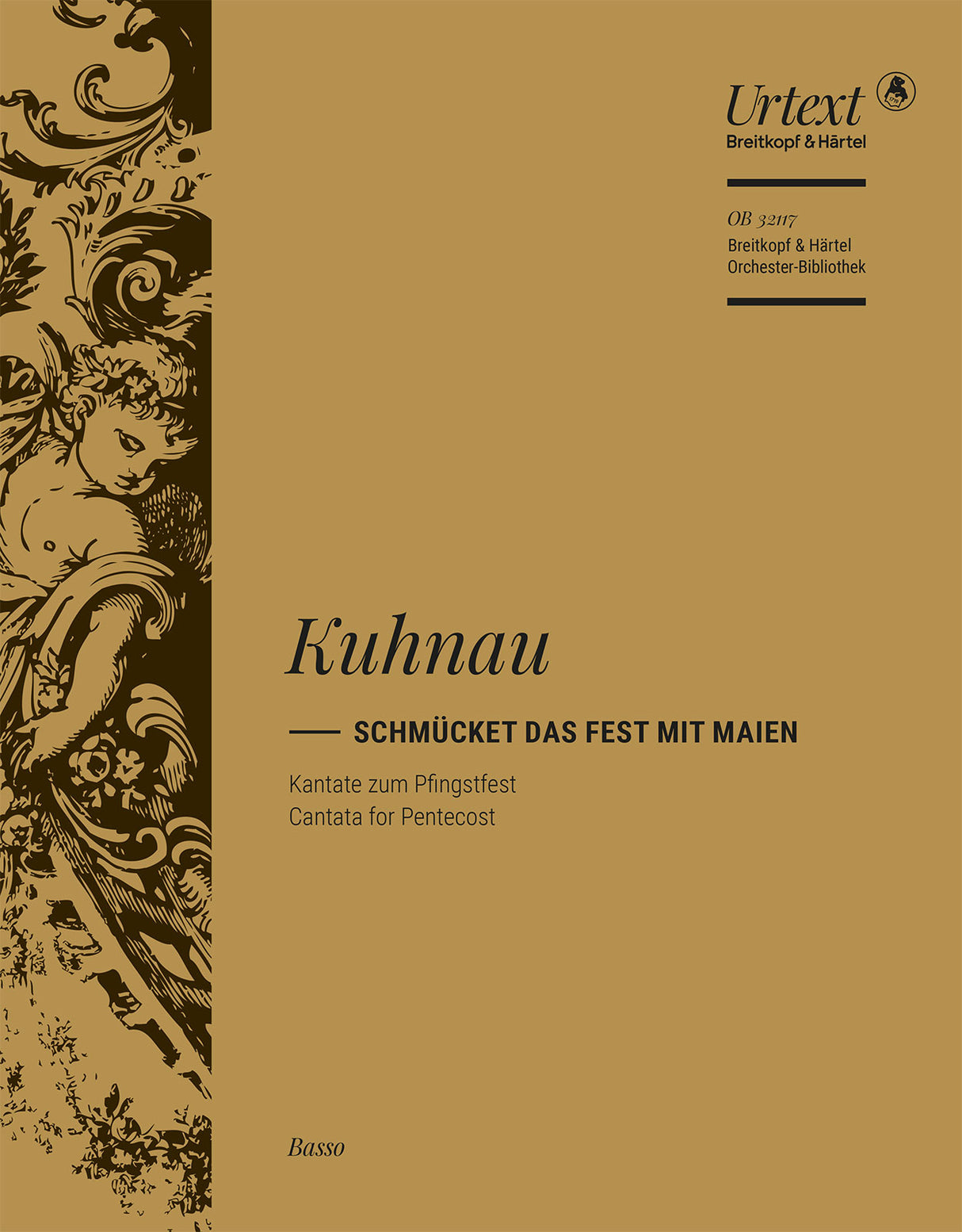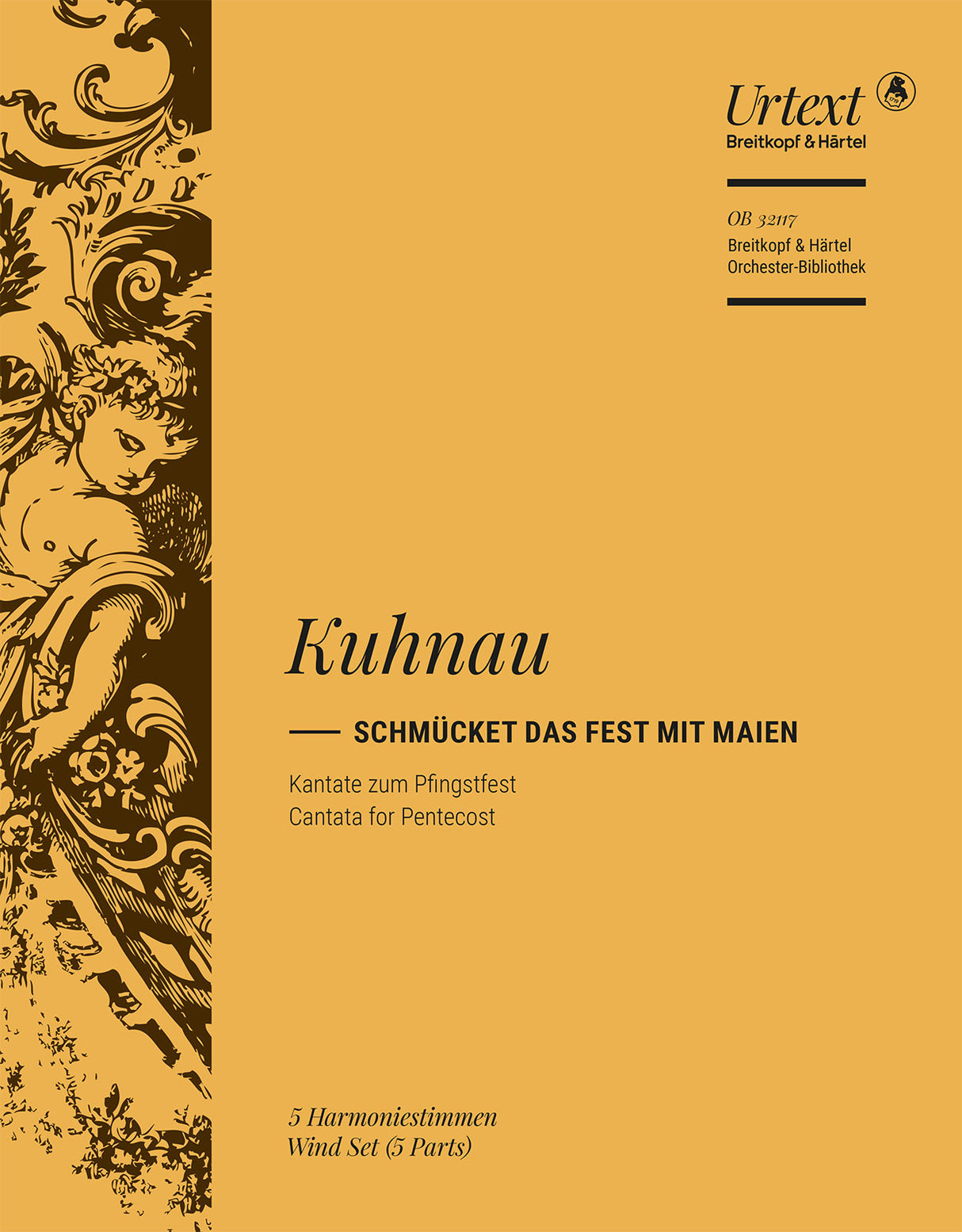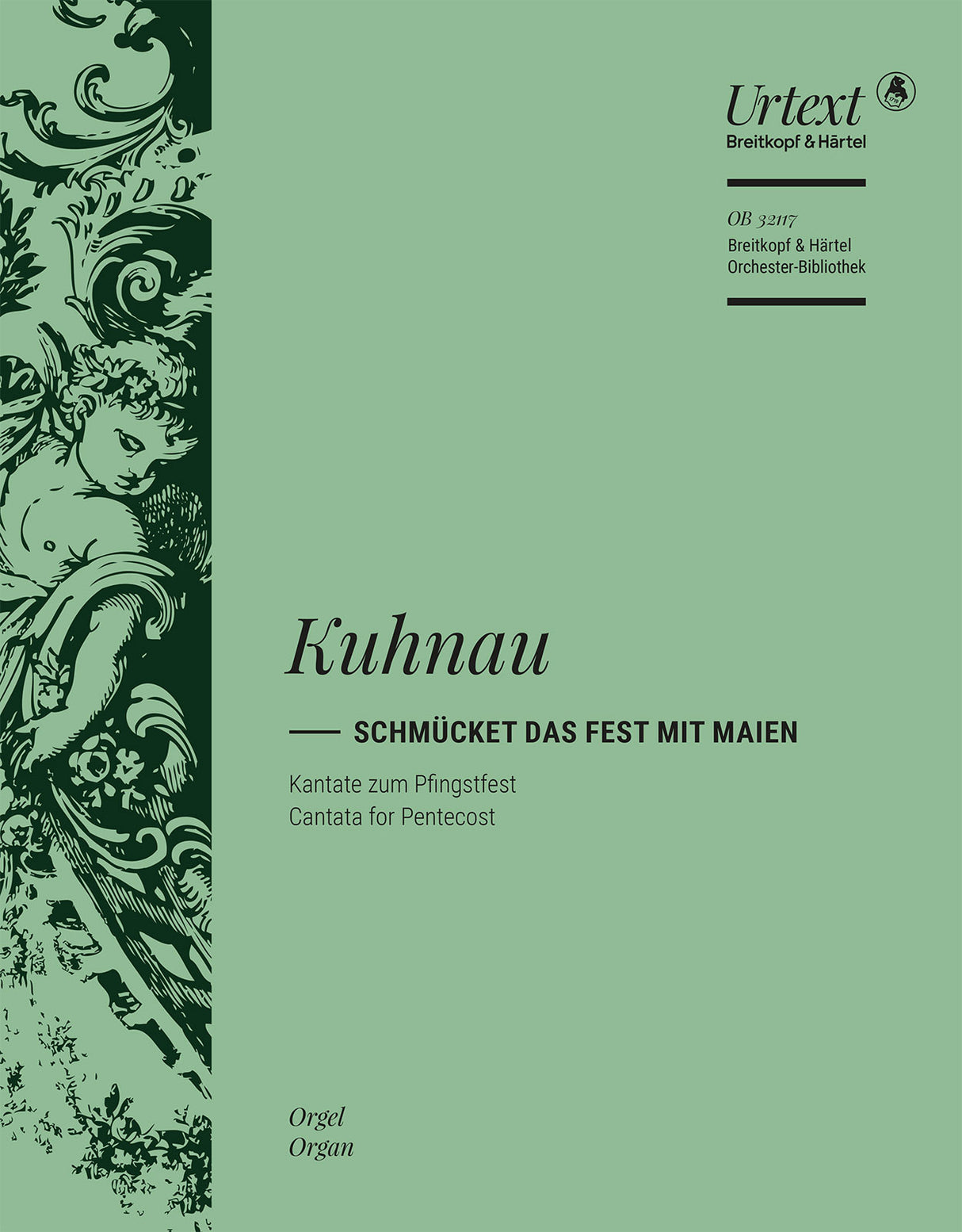Kuhnau: Schmücket das Fest mit Maien
Cantata for Pentecost
In stock and typically ships within 1 business day.
- Composer: Johann Kuhnau (1660-1722)
- Editor: David Erler
- Instrumentation (this edition): Piano Reduction, SATB Choir
- Originally for: SATB Choir, Orchestra
- Work: Schmücket das Fest mit Maien (Cantata for Pentecost)
- Work Language: German
- ISMN:
- Size: 7.5 x 10.6 inches
- Urtext / Critical Edition
Description
The cantata Schmücket das Fest mit Maien has survived without any information about the time of its composition, its purpose, or its scoring. The librettist is also unknown, although there is a comparatively similar text in the work of the Silesian poet Hans Aßmann Freiherr von Abschatz (1646–1699), printed in Leipzig in 1704. Since the copy of the score that serves as the source for this edition was probably written after 1708, and the work is closely related to the cantata Daran erkennen wir (PB 32090), it could have been written during Kuhnau's first years as Thomaskantor from 1701 on.The text set to music provides information about the purpose of the cantata. in the course of the work, the image of the bridegroom and his bride from the Song of Songs is reinterpreted as the sending of the Holy Spirit upon the congregation of Christians. in the first part, passages from the Song of Songs predominate while the second part quotes their symbolic interpretations or treats them in free poetry. in the concluding chorale, a stanza from Philipp Nicolai's "Wie schön leuchtet der Morgenstern" ("How beautifully the morning star shines"), the outpouring and the flames are also mentioned, so the purpose to the feast of Pentecost is clear.Another special feature of the cantata is the varied and colorful instrumentation with the scoring of two flutes, two oboes and bassoon in individual movements, in addition to the usual, sometimes divided strings.
Publishers use a lot of words to describe what they sell, and we know it can be confusing. We've tried to be as clear as possible to make sure you get exactly what you are looking for. Below are descriptions of the terms that we use to describe the various formats that music often comes in.
Choral Score
A score for vocalists that only contains the vocal lines. The instrumental parts are not there for reference. Generally, cheaper than a vocal score and requires multiple copies for purchase.
Facsimile
Reproductions of the original hand-written scores from the composer.
Full Score
For ensemble music, this indicates that the edition contains all parts on a single system (there are not separate parts for each player). In larger ensembles, this is for the conductor.
Hardcover
Hardbound. Generally either linen-covered or half-leather.
Orchestral Parts
Similar to a wind set, this is a collection of parts. In the case of strings, the numbers listed are the number of copies included, though generally these are available individually (often with minimum quantities required).
Paperback
When publishers offer multiple bindings (e.g. hardcover) or study scores, this is the "standard" version. If you're planning to play the music, this is probably what you want.
Performance / Playing Score
A score of the music containing all parts on one system, intended for players to share. There are not separate parts for each player.
Set of Parts
For ensemble music, this indicates that there are separate individual parts for each player.
Solo Part with Piano Reduction
For solo pieces with orchestra, this is a version that contains a piano reduction of the orchestra parts. For piano pieces, two copies are typically needed for performance.
Study Score
A small (think choral size) copy of the complete score meant for studying, and not playing. They make great add-ons when learning concertos and small chamber works.
Vocal Score
A score prepared for vocalists that includes the piano/organ part or a reduction of the instrumental parts.
Wind Set
For orchestral music, this is a collection of wind and percussion parts. The specific quantities of each instrument are notated.
With Audio
In addition to the printed music, the edition contains recordings of the pieces. This may be an included CD, or access to files on the internet.
With / Without Fingering (Markings)
Some publishers prepare two copies - a pure Urtext edition that includes no fingering (or bowing) suggestions and a lightly edited version that includes a minimal number of editorial markings.
